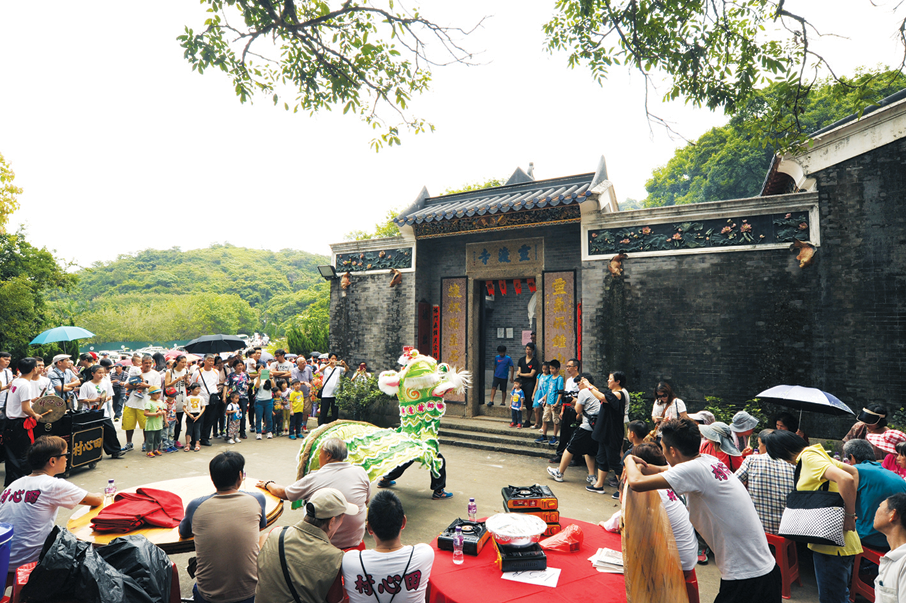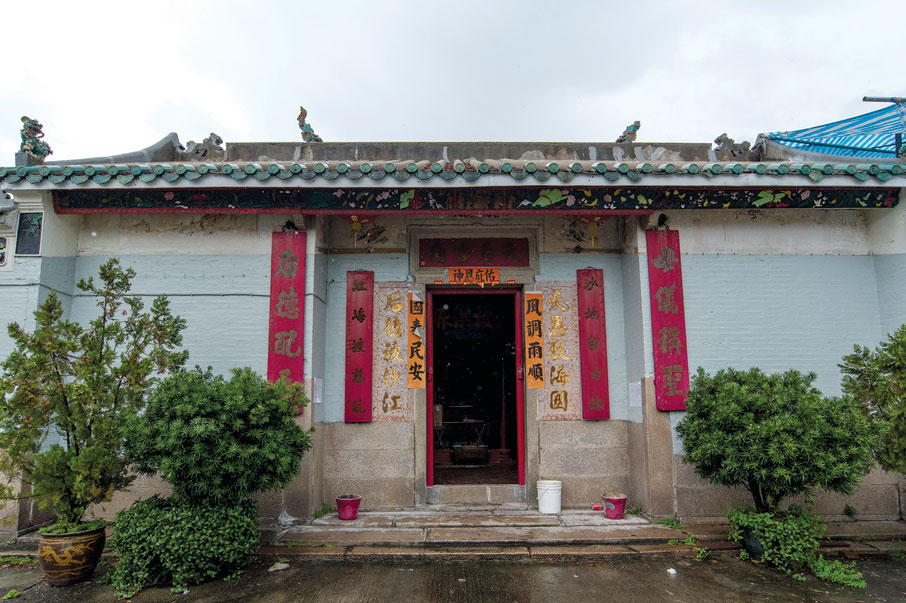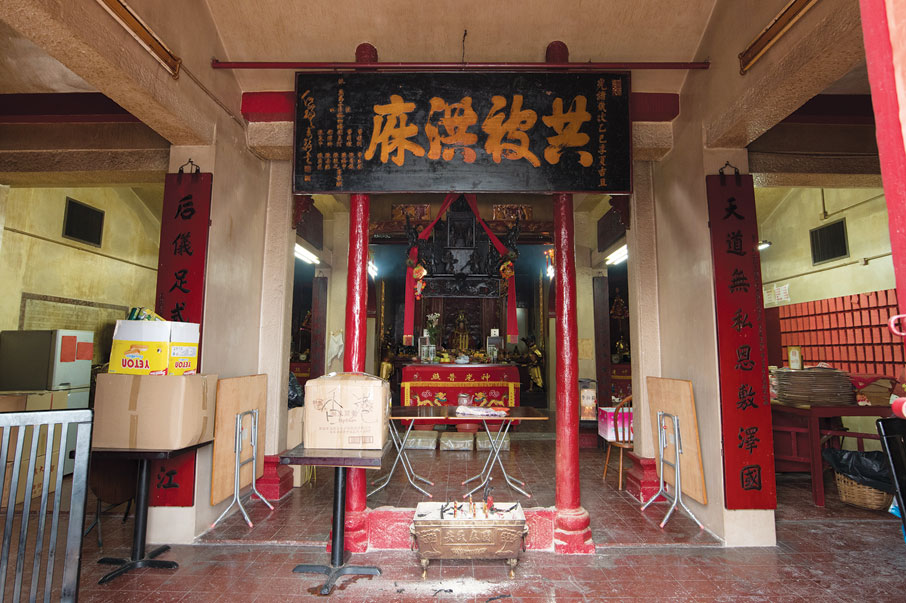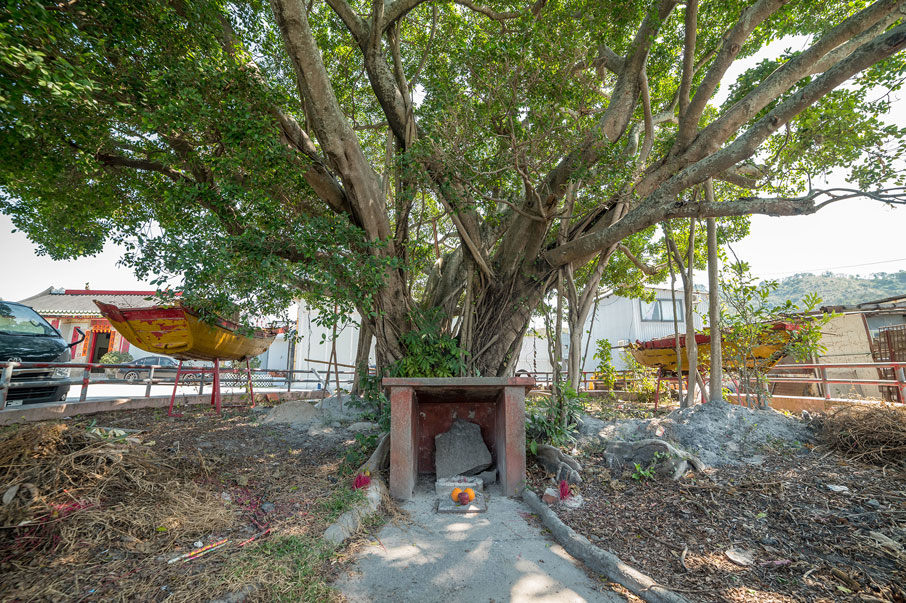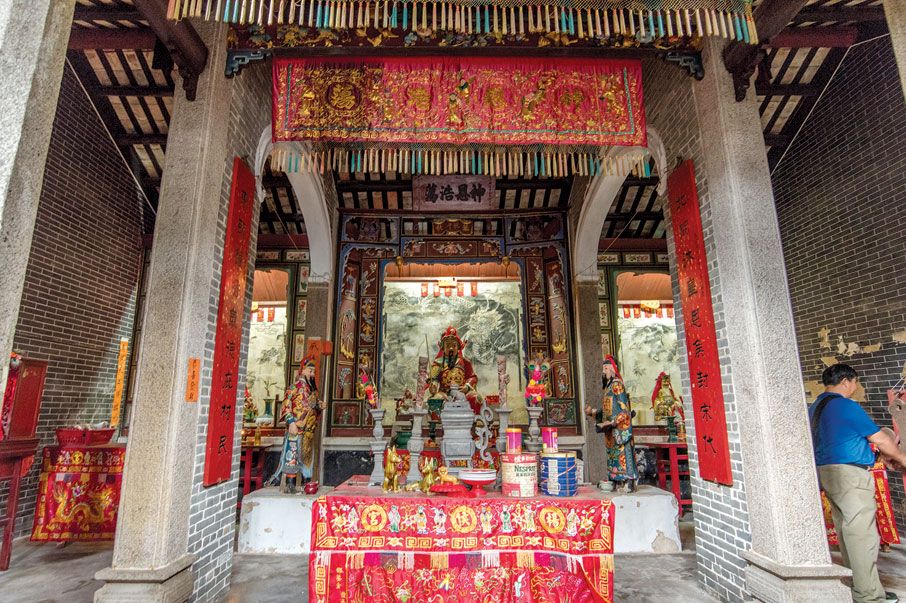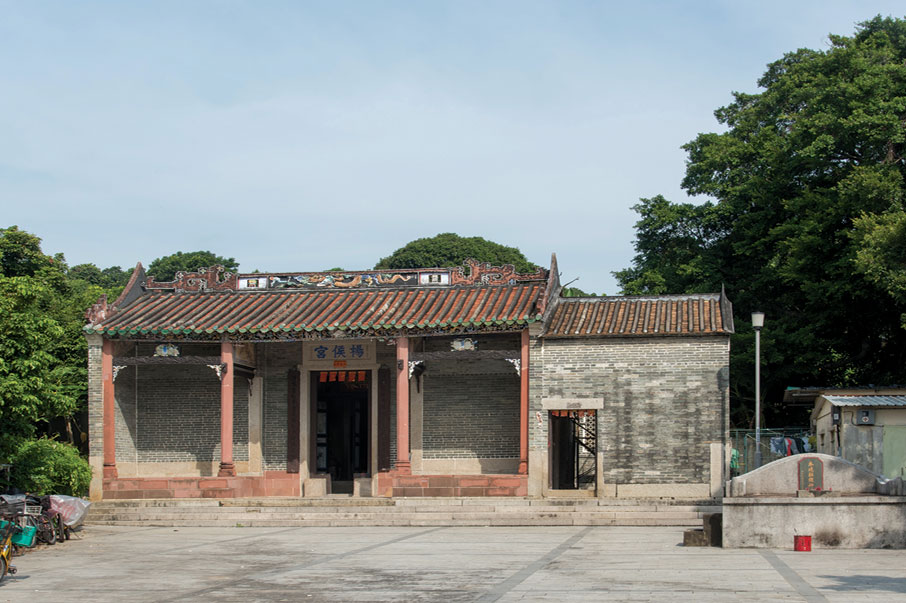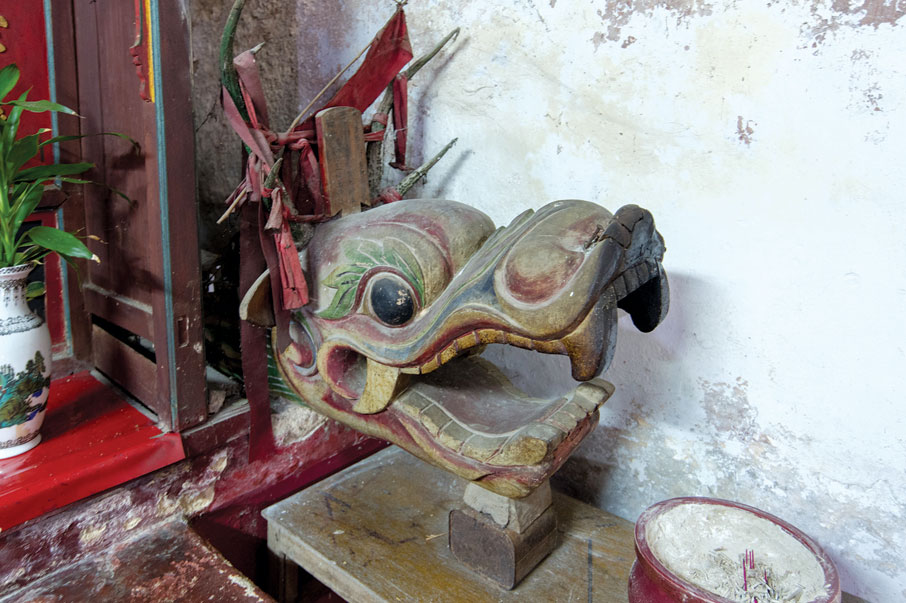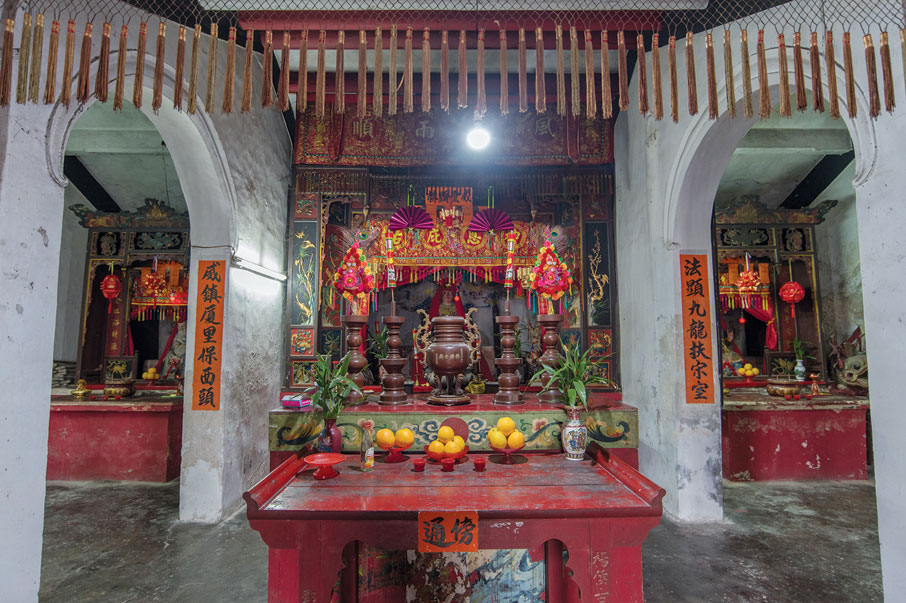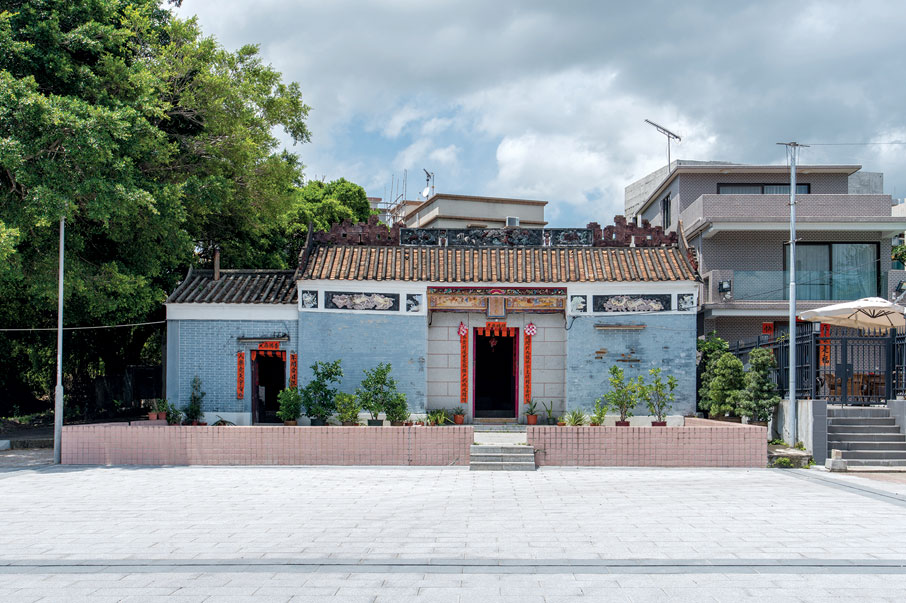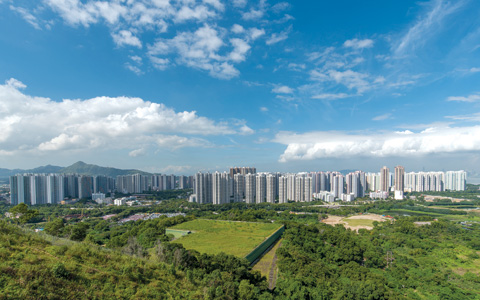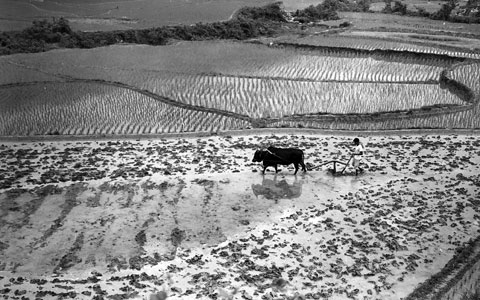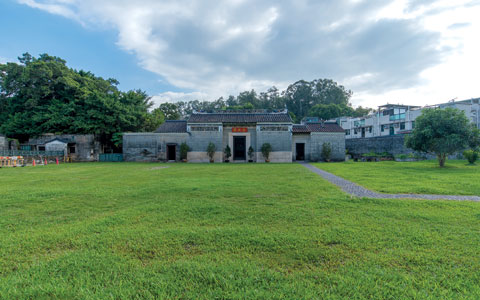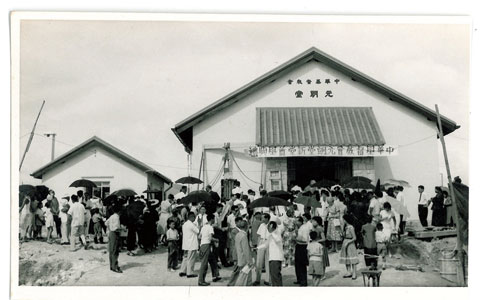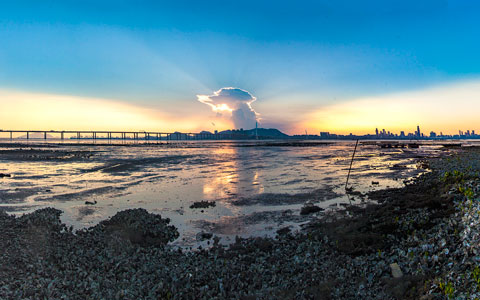Text | Tang Miu Mei
Photo | Hulu Culture
Ha Tsuen is a traditional village. In addition to different ancestral halls, there are many temples as well. Over several centuries, a set of beliefs and worship rituals has gradually developed and became the spiritual backbone of the inhabitants. Let us now explore the core values of the Ha Tsuen inhabitants and their relationship with the deities.
1. Ling To Temple -- One of the three ancient temples in Hong Kong
Ling To Temple is located at the foothill of Tai Tau Shan in the southwest of Yuen Long Ha Tsuen Heung, between the valleys of Yuen Tau Shan. According to legend, it was first established in the early year of Yuanjia Reign of the Southern Song Dynasty. Later Master Pei Tu came and stationed there. Time flies, as reincarnation in Buddhism, the name of the temple has changed several times since then. After the restoration in the Ming Dynasty, it was given the Buddhist-cum-Taoist name “Ling To Temple”. In the 20th year of Daoguang Reign (1840) of the Qing Dynasty, it was rebuilt under the hillside. People noted that the temple was located on the “tiger's head” of the Ling To Shan terrain overlooking the village, resembling a ferocious open-jaw tiger posing threats to people and animals when the temple’s gate was open. Hence, villagers agreed to a geomantic change with the main gate rebuilt, facing west on the side.
Ha Tsuen villagers believe in fung shui and deities. They are convinced that gods exist three feet above all of us, and the sky net is sparse but never leaks, which always catches us when we commit a crime. Everything happens around appropriate cause and effect. They are also convinced that the gods they worship in the Temple bless and protect Ha Tsuen, give them good weather and stable life, which are their guiding lights in the bitter sea of sufferings and provide them spiritual sustenance. Hence, when they are in doubt or during Lents and festivals, they will come and worship. Once every ten years they all come to the Tai Ping Qing Jiao Festival. In addition to the gods enshrined in their Temple, they also invite the gods from Yu Leng and Tai Tau Shan area to be enshrined in the temporary alter set up at the centre of the ritual field.
There is a plaque embedded on the right wall of the Temple’s main hall named “The Anecdotes of Beloved Father Chong Wing", which was built by Tang Wai Lun in the 30th year of Guangxu Reign. The plague describes how his father got seriously ill, and the gods had miraculously made him well again. Such a plague with folklore inscriptions to illustrate the virtues of filial piety and family incidents is unique in Hong Kong. There is also another miracle which happened to my grandmother.
In the late 1940s, my grandmother was almost dying. Since we were very poor and could not even afford to pay for a doctor, my father Kwan Dok felt totally helpless. Hence, he went to the temple to seek divine advice by drawing divination sticks. While he was conducting the ritual he promised to return and express appreciation to the gods when his mother recovered. The advice he received from the stick told him to let her drink the urine of any little boy. He then returned home and let her drink the urine from his youngest brother every morning and, lo and behold, she soon got well again. Since then, he often wanted to do something in return. In 1960s, he wanted to restore the dilapidated temple and the elders agreed with it. With the support of my ancestors and my father, the Temple was finally restored.
2. Sha Kong Tsuen Tin Hau Temple
Sha Kong Tsuen Tin Hau Temple is located in Lau Fau Shan Sha Kong. Formerly it was an altar in the neighbourhood set up by the Sha Kong Wai residents to worship their god known as "Sha Kong Ma" (a stone). After the lifting of sea ban in the early Qing Dynasty, the Tang clan in Ha Tsuen decided to build a Tin Hau Temple near the Sha Kong Pier in order to express their recognition of the Qing sovereignty. The original "Sha Kong Ma" mother stone was used as the base of the Tin Hau statue, but the Sha Kong Wai residents still regarded the Tin Hau statue as “Sha Kong Ma”. Now "Sha Kong Ma" has been relocated outside the temple, so the youngsters only know about Tin Hau and do not know "Sha Kong Ma". The old residents said that Tin Hau has devoured "Sha Kong Ma."
From the story one could also deduce a better insight. We all know that the Tang clan is a major clan, so it is easy to accuse them of being bullying. However, in this case, perhaps we may try to see them as being both flexible and pious to the gods at the same time. The Tang clansmen respect the gods, including the ones not normally worshiped by them, especially the legendary Sha Kong Ma of Sha Kong Tsuen. The Tangs did not wish to abandon her, so they wisely incorporated her stone in the shrine of Tin Hau by using it as the base of the statue. This showed respect to the Qing sovereignty after they conquered Ming, and at the same time, it was also an excellent solution to retain Sha Kong Ma. Otherwise, they could have abandoned her entirely because Ha Tsuen is on Tang’s soil. Even today, during Tai Ping Qing Jiao Festival in Ha Tsuen, the Tangs still invite villagers from Sha Kong Wai to sit in the Temple, while Sha Kong Ma is always enshrined in the ritual altar. She has never been forgotten. Whenever they repair or renovate the Temple, the auspicious or “Good Life” woman from Sha Kong Wai is invited to play an important role in getting Tin Hau ready in and out of the fire, bathing and changing into new clothes. This reflects the respect and loyalty to the villagers of Sha Kong Wai. The Tangs deliberately wish to express that Sha Kong Ma and Tin Hau have united as one goddess. As the older generation no longer mentioned the story of Tin Hau devouring Sha Kong Ma, the young descendants are even more unaware of the facts. That’s why in recent years Sha Kong Ma was moved out of the temple to be worshipped in another shrine. If this can be clarified, Sha Kong Ma will always be with us, not just a goddess appearing once every ten years in the Tai Ping Qing Jiao Festival and no one really knows about her origin.
3. Yeung Hau Temples in Tung Tau Tsuen and San Wai Tsuen
Yeung Hau Temples in both Tung Tau Tsuen and San Wai Tsuen were said to be built in memory of Southern Song Marquis Yang Liangjie by the Tang clan several hundred years ago. Yang Liangjie, together with the Tang clan whose ancestor was married to a Southern Song princess, were the Emperor’s relative. He was loyal and courageous as a general, who gave up his own life to protect the Song Emperor. The Tang clan admired his sense of virtue, so they built temples to honour him. In recent years, there are debates on this story about Yang. On one hand, Chan Pak To, an old Tanhua (third place winner at the Imperial Civil Service Examinations) of the Qing Dynasty, advocated in the 20th Century that Yang Liangjie was Yeung Hau. On the other hand, people disagree with this assumption believe that according to recent work on Yang clan genealogy, Yang Liangjie was in fact not accompanying Emperor Song at the time because he had left Quanzhou to handle something else, and the Emperor had to escape in a hurry before the pursuing enemy arrived. He tried to catch up without success, then unfortunately the boat carrying the royal family capsized, so he decided to sequester himself from society. In any case, the first version was told hundred years ago, while the second version is only quite recent, so it would be unfair to rule out the legend of Ha Tsuen just because it has become a bit controversial.
When the Tang clan moved from the old Wai to the east end and the west end, they built small temples dedicated to Yeung Hau. After the lifting of sea ban, they returned home and recuperated. When their economic situation became stable, they rebuilt the broken temples. Worshipping Yeung Hau cannot bring benefits to the Tang clan. If they do not have any relationship with him, why not worship other authorized gods, but still use Yeung Hau as the name of the Temple? This inferred that the Tang clan has always thought Yeung Hau is Yang Liangjie, who is their relative. Dedicating Yeung Hau also expresses their loyalty to the Qing sovereignty. Therefore, although the two small temples are not far away from the administrative center, there is no obstruction even though they are not dedicated to the national orthodox gods.
From the above incidents of worshipping gods, we can understand the core values of the Ha Tsuen inhabitants. We sincerely hope that these good morals will continue to flourish.
